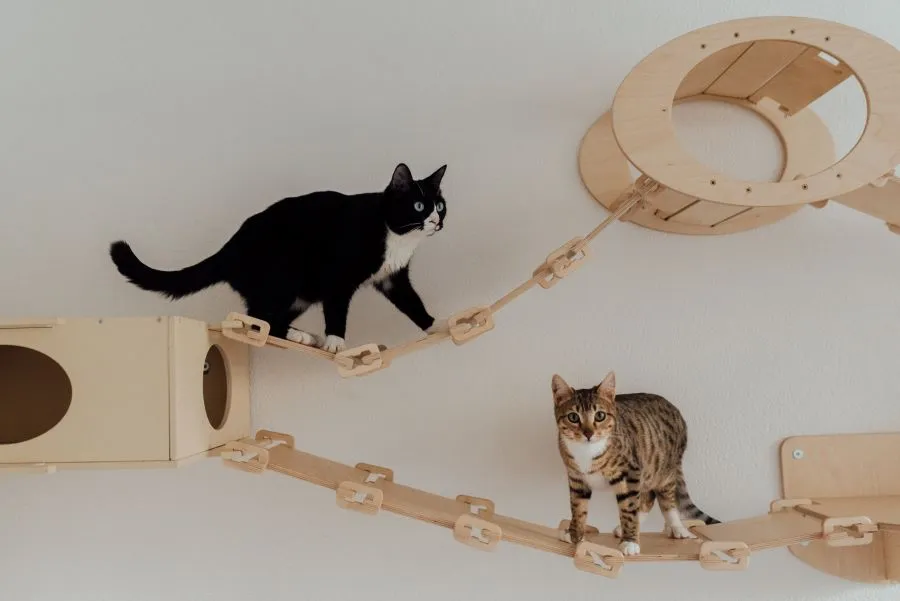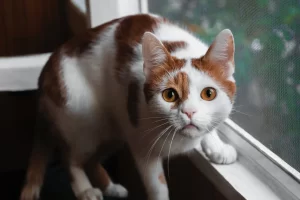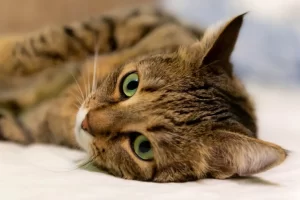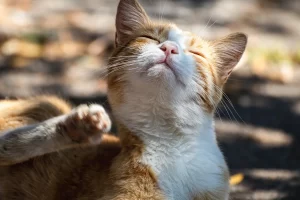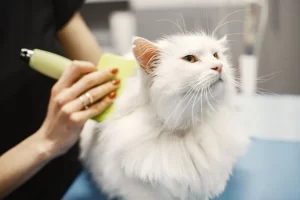As a cat owner, it’s essential to understand what activities and behaviors bring joy to your feline friend. Cats have their unique preferences and instincts that contribute to their overall well-being and happiness. Knowing what cats like to do can help you create a stimulating and enjoyable environment for your furry companion. In this article, we will explore 30 things that cats generally enjoy doing, from playtime activities to relaxation techniques, providing practical tips and instructions to help you keep your cat entertained and content. Understanding and catering to your cat’s likes and dislikes can strengthen the bond between you and your feline companion and contribute to their overall health and happiness. So let’s dive into the wonderful world of cat activities!
Table of Contents
ToggleThings Your Cat Loves to Do
- Grooming: Cats are known for their meticulous grooming habits. They spend a significant amount of time cleaning their fur, paws, and face with their tongues. It helps them remove dirt, debris, and loose hair while also providing them with a sense of comfort.
- Exploring: Cats are curious creatures and enjoy exploring their surroundings. They may climb, jump, and investigate new areas to satisfy their innate curiosity.
- Playing: Cats love to play, and it’s important for their physical and mental well-being. They may enjoy chasing toys, playing hide-and-seek, or engaging in interactive play with their owners.
- Scratching: Cats need to scratch to stretch their muscles, mark their territory, and keep their claws healthy. Providing them with a designated scratching post or pad can help redirect their scratching behavior and prevent damage to furniture or other household items.
- Sunbathing: Cats are often drawn to sunny spots in the house where they can bask in the warmth and soak up the sunlight. Providing a sunny spot for them to lounge can be very enjoyable for them.
- Climbing: Cats are natural climbers and may enjoy climbing on furniture, trees, or other elevated surfaces. Providing them with vertical spaces or cat trees can satisfy their climbing instincts and provide them with exercise.
- Hunting: Cats are instinctive hunters and may enjoy stalking and pouncing on toys or objects that mimic prey. Providing them with toys that allow them to engage in “hunt and catch” play can be stimulating and enjoyable for them.
- Resting: Cats also spend a significant amount of time resting and sleeping. Providing them with cozy and comfortable resting spots, such as a cat bed or a soft blanket, can help them relax and feel secure.
- Purring: Cats often purr when they are content, relaxed, or seeking attention. Some cats enjoy being petted or stroked in specific areas that trigger their purring response.
- Watching birds and wildlife: Cats are known for their keen eyesight and may enjoy observing birds, insects, or other wildlife from a window or an outdoor enclosure.
- Socializing: Cats are social animals and may enjoy interacting with their human companions or other pets in the household. Spending quality time with your cat, engaging in gentle play, or simply sitting close to them can strengthen your bond and make them happy.
- Being brushed: Cats with longer fur may enjoy being brushed to remove tangles, mats, and loose hair. Regular grooming can also help reduce shedding and keep their coat healthy.
- Eating: Cats love food, and providing them with a balanced and nutritious diet is essential for their well-being. Feeding them small, frequent meals throughout the day and offering a variety of textures and flavors can keep them interested and satisfied.
- Drinking water: Cats need access to clean, fresh water at all times to stay hydrated. Providing them with a clean water source, such as a water bowl or a water fountain, can encourage them to drink more water.
- Hiding: Cats are known for their love of hiding in cozy, secluded spots. Providing them with hiding places, such as a cat cave, a cardboard box, or a designated hiding spot in the house, can make them feel safe and secure.
- Observing from high places: Cats enjoy observing their surroundings from high vantage points, such as a windowsill, a cat tree, or a shelf. Providing them with access to elevated spaces can satisfy their need for verticality and provide them with a sense of security.
- Stretching: Cats love to stretch their bodies to keep their muscles limber and healthy. They may stretch their backs, legs, and paws in various positions, especially after waking up from a nap. Providing them with ample space and opportunities to stretch, such as a scratching post or a designated stretching area, can help them maintain their flexibility and overall well-being.
- Chasing and playing with small prey toys: Cats have a natural instinct to chase and catch prey. Providing them with small prey-like toys, such as toy mice or feather wands, can stimulate their hunting instincts and provide them with physical and mental exercise.
- Climbing on furniture: Cats enjoy climbing on furniture, such as sofas, shelves, or tables, to get a vantage point, explore, or simply nap. Creating safe climbing routes or providing them with designated furniture or cat trees can satisfy their climbing instincts and keep them entertained.
- Kneading: Kneading is a behavior where cats push their paws in and out against a soft surface, often accompanied by purring. Cats may knead on blankets, pillows, or even on their owners. It’s a comforting and soothing behavior that cats often enjoy.
- Catnip play: Catnip is an herb that can induce a playful and euphoric response in cats. Providing them with catnip toys, treats, or scratching posts can be a fun and stimulating activity for them.
- Watching TV or videos: Cats are known to be intrigued by moving images on screens, such as TVs or videos of birds or other animals. Allowing them to watch TV or providing them with videos designed for cats can be an interesting and enjoyable pastime for them.
- Listening to calming music: Cats are sensitive to sounds and may enjoy calming music or ambient sounds, such as soft classical music or nature sounds. Playing soothing music or providing them with white noise can create a relaxing environment for them.
- Exploring boxes or bags: Cats are notorious for their love of boxes and bags. Providing them with empty boxes or paper bags to explore, hide, and play in can be a simple and inexpensive way to keep them entertained and engaged.
- Licking and grooming their own fur: Cats may spend time licking and grooming their own fur, especially after meals or when they feel anxious. It’s a natural behavior that can provide them with comfort and relaxation.
- Interactive toys with treats: Interactive toys that dispense treats or food can be engaging and rewarding for cats. They can enjoy playing with the toy and receive a tasty treat as a reward, which can provide mental stimulation and satisfy their predatory instincts.
- Puzzle feeders: Puzzle feeders are toys or devices that require cats to work for their food by solving puzzles or manipulating parts of the toy. They can provide mental stimulation, challenge, and reward for cats while keeping them entertained.
- Training sessions: Cats are trainable and can learn tricks or behaviors through positive reinforcement training. Training sessions can provide mental stimulation, bonding opportunities, and a sense of accomplishment for both the cat and the owner.
- Outdoor exploration (if safe and supervised): Cats that are allowed to go outdoors in a safe and supervised manner may enjoy exploring their environment, sniffing new scents, and experiencing the outdoors. However, it’s important to ensure that the cat is safe from potential hazards, such as traffic or other animals, and is up-to-date on vaccinations.
- Cuddling and receiving affection: While not all cats may enjoy cuddling, many cats love to be petted, stroked, or held by their owners. Paying attention to their individual preferences and providing them with affection and gentle physical contact can make them feel loved and happy.
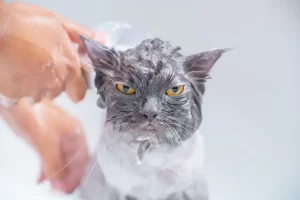
Things Cats Don’t Like to Do!
And here are the things your cat does not like to do:
- Getting wet: Most cats do not enjoy being wet, as their fur is not designed to handle moisture and can become heavy and uncomfortable when wet.
- Having their ears pulled or touched roughly: Cats are sensitive to touch, and having their ears pulled or touched roughly can be uncomfortable or painful for them.
- Being restrained or held tightly: Cats are known for their independence, and many do not appreciate being restrained or held tightly, as it can make them feel trapped or anxious.
- Loud or sudden noises: Cats have sensitive hearing, and loud or sudden noises, such as fireworks or loud music, can startle or frighten them.
- Being in unfamiliar or crowded places: Cats are creatures of habit and prefer familiar environments. Being in unfamiliar or crowded places can be stressful for them.
- Being startled or surprised: Cats do not generally enjoy being startled or surprised, as it can trigger their instinctual fight-or-flight response and cause stress or anxiety.
- Having their whiskers touched: Whiskers are highly sensitive and important sensory organs for cats. Touching or bending their whiskers can be uncomfortable for them.
- Being ignored for extended periods: Cats are social animals and generally do not like to be ignored for extended periods of time. They may become bored or anxious if left alone for too long.
- Being scolded or punished: Cats do not respond well to punishment or scolding, as it can create fear or anxiety in them and damage the bond between the cat and their owner.
- Having their food or water bowl empty: Cats prefer to have access to fresh food and water at all times. Having their food or water bowl empty for too long can cause stress or discomfort.
- Having their litter box dirty or in a noisy location: Cats are clean animals and prefer a clean and quiet location for their litter box. A dirty or noisy litter box can be off-putting for them.
- Being forced to interact with other cats or animals: Cats are territorial animals and may not enjoy being forced to interact with other cats or animals, especially if they do not get along with them.
- Having their routine disrupted: Cats thrive on routine and may become stressed or anxious if their daily routine is disrupted, such as changes in feeding or playtime schedules.
- Being teased or tormented: Cats do not appreciate being teased or tormented, as it can cause stress, fear, or aggression in them.
- Being chased or pursued: Cats are natural hunters, but being chased or pursued by humans or other animals can trigger their instinct to flee or defend themselves, leading to stress or anxiety.
- Being denied access to their preferred sleeping spot or hiding spot: Cats often have their preferred sleeping or hiding spots, and being denied access to these spots can cause discomfort or stress for them.
- Being forced into close proximity with strangers: Cats are cautious by nature and may not enjoy being forced into close proximity with strangers, especially if they are not familiar with the person.
- Having their personal space invaded: Cats value their personal space and may not appreciate having it invaded, such as being hugged or kissed excessively by humans.
- Being exposed to strong smells, such as perfumes or cleaning products: Cats have a keen sense of smell, and strong smells, such as perfumes or cleaning products, can be overwhelming or unpleasant for them.
- Being left alone for extended periods: Cats are social animals and generally do not like to be left alone for extended periods of time. They may become bored, anxious, or lonely if left alone for too long.
Frequently Asked Questions (FAQs) about Things Cats Like to Do
What do cats like to play with?
Cats enjoy playing with a variety of toys such as catnip toys, feather wands, laser pointers, and interactive toys that dispense treats.
What are some indoor activities for cats?
Indoor activities for cats can include playing with toys, climbing on furniture or cat trees, exploring boxes or bags, and watching TV or videos.
What are some outdoor activities for cats?
Outdoor activities for cats, if safe and supervised, can include exploring the yard or garden, sunbathing, and hunting or chasing prey.
What kind of treats do cats like?
Cats typically enjoy treats that are specifically made for them, such as freeze-dried meat or fish treats, or treats with flavors like tuna or chicken.
What types of scratching surfaces do cats prefer?
Cats prefer scratching surfaces that are sturdy, tall enough for them to stretch fully, and made of materials like sisal rope or corrugated cardboard.
What are some ways to provide mental stimulation for cats?
Cats can be mentally stimulated through activities such as puzzle feeders, interactive toys, training sessions, and providing opportunities for them to explore and sniff new scents.
What are some calming techniques for cats?
Calming techniques for cats can include playing calming music, providing hiding spots or safe spaces, using pheromone diffusers, and gentle physical contact such as petting or brushing.
What are some common mistakes to avoid when playing with cats?
Common mistakes to avoid when playing with cats include using your hands as toys, encouraging aggressive play, or playing too roughly, as this can lead to unintended behaviors or injuries.
What kind of scratching post is best for cats?
Cats prefer scratching posts that are tall, stable, and made of materials like sisal rope or corrugated cardboard. Vertical scratching posts are often preferred over horizontal ones.
What are some ways to keep indoor cats entertained?
Indoor cats can be entertained with toys, puzzle feeders, cat trees, scratching posts, window perches, and providing opportunities for climbing, hiding, and exploring.
What are some signs that my cat is enjoying playtime?
Signs that your cat is enjoying playtime can include purring, wagging their tail, dilated pupils, playfully stalking or pouncing on toys, and engaging in vigorous but non-aggressive play.
What are some signs that my cat is stressed during playtime?
Signs that your cat may be stressed during playtime can include hissing, growling, flattening their ears, lashing their tail, or showing signs of aggression or fear.
What are some common cat toys that can pose risks to cats?
Common cat toys that can pose risks to cats include small toys that can be swallowed, toys with small parts that can be chewed off, or toys with long strings or ribbons that can pose a choking hazard.
What are some safe ways to introduce my cat to new toys?
Safe ways to introduce your cat to new toys can include using toys that are similar to their existing toys in size and texture, rubbing the toy with catnip to make it more appealing, and allowing your cat to approach and explore the toy at their own pace.
What are some signs that my cat is showing affection?
Signs that your cat is showing affection can include purring, kneading with their paws, head-butting, licking or grooming you, and sitting or laying close to you.
What are some ways to create a cat-friendly environment at home?
Creating a cat-friendly environment at home can include providing scratching posts, perches or elevated spaces for climbing, comfortable resting spots, access to windows for bird-watching, regular playtime and exercise, and a clean and safe living environment.
What are some ways to prevent boredom in indoor cats?
Indoor cats can get bored easily, so providing regular playtime with toys, puzzle feeders or treat-dispensing toys, rotating toys to keep them interesting, setting up a window perch for bird-watching, and creating a stimulating indoor environment with hiding spots or vertical spaces can help prevent boredom.
What are some tips for introducing a new toy to my cat?
Introducing a new toy to your cat can be done by placing it in an area where your cat frequents, rubbing it with catnip to make it more enticing, and allowing your cat to approach and explore the toy at their own pace. Positive reinforcement with treats or praise can also help create a positive association with the new toy.
What are some ways to help my cat relax and reduce stress?
Cats can benefit from relaxation techniques such as gentle petting, brushing, providing hiding spots or safe spaces, playing calming music, using pheromone diffusers, and creating a consistent routine and environment to help reduce stress and anxiety.
What are some common mistakes to avoid when interacting with my cat?
Common mistakes to avoid when interacting with your cat include using your hands as toys, encouraging aggressive play, punishing or scolding your cat, ignoring their body language, and not providing enough mental and physical stimulation, as these can lead to unwanted behaviors or stress in cats.

